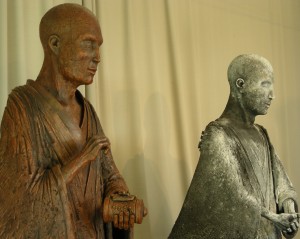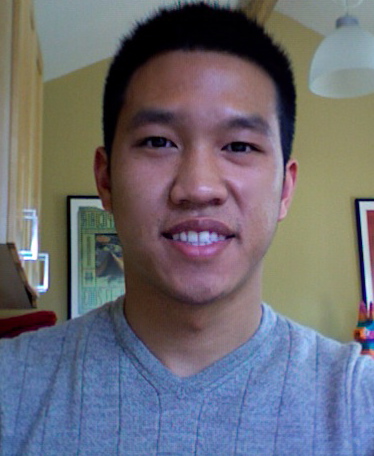Here is a list that will help businesses embrace the methods now available for their marketing efforts through social media platforms, especially via Twitter and Facebook. [This was originally posted on my blog How To Do Social Media by the book.] Continue reading 21 Tips for using Facebook and Twitter for Business via Brian Solis
Tag Archives: social media strategy
Ask 14 Questions for Success in 2011 [Briefly stated]
 Here’s some help to start planning for 2011 — from an article by Social Media Consultant Pam Moore, who regularly publishes great information on her Marketing Nut blog.
Here’s some help to start planning for 2011 — from an article by Social Media Consultant Pam Moore, who regularly publishes great information on her Marketing Nut blog.
Pam defines a Business Model:
A business model describes the rationale of how an organization creates, delivers, and captures value – economic, social, or other forms of value.
She lists 10 ways that a properly designed business model will help you make decisions to build your profits. But the thrust of the article are 14 questions you can use to structure and describe your business model:
1. What is my core value I offer customers?
2. What is my zoom facto; how are my services unique?
3. What intellectual capital do I need to protect?
4. What is my sales model?
5. What is my service model?
6. Should I sell my products online, offline or both?
7. Who should I partner with to develop and deliver services?
8. What type of clients should I target and serve?
9. What type of clients should I not serve?
10. What is an ideal partner for me to collaborate with?
11. What should I outsource versus do in-house?
12. What type of pricing models should I implement?
13. What infrastructure is required to support my business?
14. What mediums should I use to market and advertise my products and services? How should I use social media to market my business?
For more information about these questions AND the list of What a Business Model Can Do For You, read Pam’s entire article HERE
“I’m so lucky. I just found a way to update to ALL my sites at the same time!”
 My stomach turns, my eyes roll, and I heave a deep sigh every time I hear people say to me how lucky they are to be able to write the exact same thing on all their sites at exactly the same time . . . so that they can get on with the really important parts of their life.
My stomach turns, my eyes roll, and I heave a deep sigh every time I hear people say to me how lucky they are to be able to write the exact same thing on all their sites at exactly the same time . . . so that they can get on with the really important parts of their life.
IMHO [In My Humble Opinion], automatic, robotic, non-deliberate, helter-skelter postings are the bane of the Internet.
On the other hand, the opportunity to truly connect with large numbers of people to share information is paradigm-changing and an essential step in building a better world.
That is why I love social media.
So when I read this blog/discussion comment “There are no bad ways to leverage social media,” I naturally had to disagree. In fact, one of my popular posts, 10 Mistakes Made by Social Media Newbies, lists ten basic cautions.
And here’s another doomed-to-fail strategy sent me by a marketer who doesn’t know social media and wants to farm it out to someone who does. On the surface, that plan certainly could work, but not given the RFP [Request for Proposal] prescriptions. Here is what will not work:
1) The marketer does not want the social media person to talk with the client.
2) The social media person [SMP] is supposed to spend only 8-10 hours a month.
3) In that amount of time, the SMP must “set up, improve, and manage the following profiles: LinkedIn, Facebook, Twitter, and a YouTube channel.”
*NOTE from RFP: “This should include but not be limited to the addition of contacts, photos, videos, groups, fan pages and all necessary structures that allow you to successfully execute on that social media platform. Any and all additional tools you deem necessary to execute a robust social media plan should be part of your setup process with each client.”
4) In that same 10 hours a month, the SMP is also supposed to “create, proof, and send two 500-word e-zine articles and one email blast per month.
5) Oh, did I say that the SMP does not talk to the client?
The big thing that the marketer fails to understand is that social media strategy involves an organizational understanding and mindset that customers can become partners. Social media is not a Push strategy where messages are simply distributed; rather, there must be listening to the cyber discussions, responding to feedback, and sharing a wide variety of information.
PS I got this Direct Message on Twitter from someone whom I had just followed: Let’s be honest; this is an “auto” welcome. But I still appreciate you 🙂 Let me know if I can help in any way.
Here was my response: I LUV your blog, but I hate AUTO anything, even if someone is being “honest.” Auto is a huge turn-off to me 🙁
Talk to your Social Media Person, BNI-ers: Dr. Ivan Says
 My business communication adventure has veered onto an exciting new HighWay with my introduction and initiation into BNI, the largest business networking organization in the world.
My business communication adventure has veered onto an exciting new HighWay with my introduction and initiation into BNI, the largest business networking organization in the world.
It all started when I read a LinkedIn request for a SOCIAL MEDIA TRAINER to join the 1st Advantage chapter of BNI in Marin County, California. And the rest, as they say, is history . . .
The culture of BNI and other networking/referral organizations resonates with the supportive, personal, collaborative spirit so important to the community-building value of social media activities — it’s a natural complement. BNI founder Ivan Misner recognized the importance of “my category” in a recent podcast, which you can hear in its entirety at the end of this post.
Below are highlights from his program, to which I have added bits of commentary [° in green italic]
 Social Media Do’s and Don’ts: Podcast Highlights
Social Media Do’s and Don’ts: Podcast Highlights
by Ivan Misner
Here are some suggestions on how to use social media effectively.
- Find the right social media for you. Facebook is not the only network.
- In addition to Facebook, you should have familiarity with blogging, LinkedIn, and Twitter.
- Schedule your time with social media and make it part of a strategy.
- This is difficult, but a crucial plan if you really want to make social media work for you.
- Respond to comments. Retweet. Social media is a dialog.
- Listen first. Then respond and provide appropriate feedback.
- Use non-productive time (when you don’t usually work) for online networking.
- Ivan suggests TV “down-time” works for lots of folks.
- Use tools like Ping.fm, HootSuite, and Seesmic to save time.
- While a good number of people use special sites to automate tweets and updates, my personal philosophy is not to automate my online participation. Frankly, if everyone is automating, then who is there to read and respond?
- Remember that V/C/P still applies. Building relationships on social media takes time.
- This is about creating visibility and credibility before you start to get profitability.
- If you have a social media expert in your chapter, talk to them.
- I know whom my fellow 1st Advantage colleagues can talk to 🙂
Here are five common mistakes businesses make on social media:
- Spending too much time on sites you enjoy without evaluating their value to you.
- Visiting a site for work and getting distracted by interesting posts.
- Not recognizing when it’s time to delegate certain social media responsibilities.
- Not providing consistent fresh content on your blog.
- Forgetting that social media is about engaging in a conversation, not about selling.
Brought to you by Ask Ivan Misner.
- Click below to hear the entire podcast:
Do’s and Don’ts of Social Media from BNI’s Ivan Misner
How To Do Social Media By The Book
One year ago today, I wrote my first blog post: Follow me along Social Media Revolutionary Road . . . and what a ride it’s been — life altering, for certain.
The lessons keep on coming, especially on how to do this blogging gig. While there is NO one right way to blog — or become an “A-List Blogger — there are some Best Practices that win friends and influence people.
SHARISAX IS OUT THERE will evolve and apply some new strategies in this second year, but four months ago I followed some “best practices” and began a second blog using a very consistent design with fewer categories and a list format.
Check it out:
This Social Media Revolution is changing our lives and our selves: As fast as we are figuring out what to do next, we hear about yet another site, another tool, or another app.
Early Adopting Tech Geeks love this stuff.
But what about the rest of us . . . especially those who may still think “blogging” is a silly word, Twitter is stupid, and Facebook is a waste of time.
How to start doing “it”
Ralph Waldo Emerson, 19th century American philosopher and essayist, said that
“We are all looking for someone to tell us what to do.”
That’s one of the reasons why people write books, why bookstores and libraries are great places to hang out, and why book lovers like me scour the shelves for the newest, greatest information.
Find Top Tips in these Articles: The purpose of this blog is to share some of the best advice I’m reading from the most current books on social media and internet marketing — many of these books you will want to read cover to cover.
Categories click on choice below:
Social Media Enables Companies to Become Part of the Recommendation Chain
Social Media is all about seeing what others are saying
“The snowstorm is over. Everything is white. So now what?”
How do we make social media relevant to company executives? Everyone hears the buzz, but many companies do not understand today’s marketing environment, and they don’t know where to start.
That’s where programs like Social Media Academy fill the void — teaching business leaders all over the world to look, listen, and learn how to implement successful social media strategies.
I’m enrolled in this year’s first 7-week Social Media Academy Leadership session and will be sharing regular reports on what I’m learning.
Social Media: not about its tools, but its implication for business
Company leaders must rise above the “local noise” and buzz about social media, so they can take a global view. Different types of companies have different needs. Whatever the company, though, it is important to understand that Social Media is not a campaign, but it is a State of Mind. It is about empowering employees, not just about having everyone Tweeting all day.
Customers have changed, but sales/marketing has not
Thirty-forty years ago, people had different levels of trust. They’d go to vendors and take their word for it — and their products. People no longer ask experts; they ask their friends.
“I want to see what others say: that is Social Media.”
Now 60-80% of purchases are made because of recommendations. Businesses need to be part of the Recommendation Chain. Social Media is where customers meet customers for experience, skill development, and failure prevention. When a company builds a product or service that people are asking for . . . How COOL is that!
Create a better customer experience
Lay the foundation for your social media strategy– plan by understanding the dynamics of the market before diving in. There is no rush: Look, Listen, and Think before acting.
Social media is personally empowering. It is not just for the elite; anyone can do this. Take care of your connections and leverage them.
If you don’t follow the road your customers are taking, you will lose them.
So you’ve joined a LinkedIn Group . . . what’s next?

No matter what level of social media understanding you are at, you will ALWAYS find exciting new information and ways to get the most out of your online experience.
Sometimes it’s a matter of being READY to appreciate the information.
And I, personally, am ready to dive into Group conversations.
How about you?
- Joined any groups yet?
- Did you know what you were doing?
- Are you in the right groups?
- How are you participating?
All of the above are great questions, and I’ve now joined several groups on LinkedIn BUT I’m not so sure that I (a) knew what I was doing; (b) joined the right groups; or (c) knew what was expected of participants.
So when my SOCIAL MEDIA MAVEN group included a discussion on groups, I was really intrigued.
And then when I read Delores Wilson’s article, I thought “WOW, I have to share this.”
Delores was kind enough to allow me to re-post her article on my blog, so you can read her insights on HOW GROUPS WORK – AND HOW YOU CAN MAKE THEM WORK FOR YOU:
 I’ve Joined a Group….Now What?
I’ve Joined a Group….Now What?
by Delores R. Williams:
http://www.socialmediadiet.blogspot.com
You’ve finally set up all of your profiles on Facebook, LinkedIn, Twitter, YouTube and all of the other seemingly endless social media platforms. After wading through the plethora of applications, plug-ins, connections and friending, you suddenly find yourself in the world of Groups. You scratch your head, deepen your breath while you ponder this new social media frontier.
What the heck is this? Nobody told me about this “group” thing! Do I join a group? Host a group? Does this require more time? …I don’t remember signing up for this! Now what?
Understanding how communities REALLY behave is important to know BEFORE you either join or/and host a group.
People that join groups may have agendas/goals that may/may not align with those of the host or other group members. Making the mistake of assuming that community members are all on the same page – that once someone joins a community, they are going to abide by the rules & guidelines- could be further from the truth.
How do you get around the daggers that may put holes in the successful functioning of your group?
Best solution – a discussion of objectives, goal and rules for, both, the group and its community. In essence, what I refer to as – THE ROLL CALL. Short and sweet, this is it:
The Moderator:
aka, Host, Admin, Organizer. The Moderator is the ‘mayor’ of the community. It is the job of the Moderator to ensure that the goals, objectives and rules are abided by all of the community members. Monitoring and enforcing group guidelines ensures that the group runs smoothly and that community members feel ‘safe’ and have their basic needs met at all times.
The Influencers:
These are members who, naturally, take on roles like policing ‘bad’ behavior, welcoming new members, inviting other new members and attributing to group discussions. Influencers are self-motivated, enthusiastic community members who are invested in the success of the group.
Second Tier Influencers:
These are members who, through listening to the discussions and conversations from others in the community (usually The Influencers), are learning to appropriately utilize the group for its said purpose. Second Tier Influencers often times are converted into becoming Influencers themselves.
The Individual:
The individual, despite being aware of the guidelines, objectives and rules, has his/her own agenda for joining the group. Behavior is often times contrary to the rules set by The Moderator and results in creating discomfort within the community. These members push the envelope by constantly testing the rules (i.e., blatant product advertising instead of discussing brand/industry standards). The ‘Individual’ keeps The Influencers busy and definitely requires prompt intervention from The Moderator.
That’s it! Social Media Communities…in more than 140 characters.
Tell me your thoughts? Did I hit the mark? or am I way off?
I’d like to hear from the community….
Click on photos to link to other Howard Blum photos or go to his website
Managing MY Online Presence: A Road Map

Where do I WANT to go?
NOT
Where am I going?
I’m remembering the quote I often tell students: “If you don’t know where you are going, any road will take you there.”
Back on July 1, I started to think about “managing” my online presence, i.e., putting some routine in place primarily to help me select where I wanted to make my Web contributions. So I wrote “How do you manage your Online Social Media presence?”
In essence, I was thinking aloud. What I accomplished — and, unfortunately, all I accomplished with that post — was to ask myself to set aside time in the morning to Go Online.
But I didn’t give myself a road map. Hence, “If you don’t know where you are going, any road will take you there.”
Road Map — by the numbers.
1) Step one on the road must be taking time to clarify Objectives. So I thought I’d imagine the possibilities:
a) Casual: Whenever . . . of course that’s not me. It’s really OK if that label describes you, someone who spends as little or as much time as happens to be there: checking out your Facebook page, email, Twitter account, etc. I.E., WHENEVER . . . [been there, done that]
b) Experimenter: We’re ALL experimenting here, and that is a good thing. But there’s a danger — lost opportunity and value when you never really “move off the dime.” Get out there and BUILD, don’t just keep trying new things. [been there, done that]
c) Reader: One of the greatest benefits of Twitter for me personally are all of the website references with Great Stuff. I could read and read and read. How many of us bookmark and bookmark and bookmark . . . and don’t even get to read? [been there, done that]
d) Novice Participant: Read some blogs that strike a chord and add your voice once or twice a week. Join some groups and occasionally check to see what group members are asking and answering. [been there, done that]
e) Active Contributor & Engager: This is who I WANT to be. And we all know that Today is the First Day of the Rest of Our Lives.
So what does an ACE [Active Contributor & Engager] do?
Here’s my new plan . . . and a new Number One since the Objective has been taken care of:
1) Make a list of WEEKLY goals {I believe I can hold to that) and check off my accomplishments EVERY Sunday night.
2) Prioritize those goals to make certain that the ones on the top of the list are done for sure.
3) Because my original intention, way back when I first posted on April 23, was To Become an A-List Blogger — and that continues to be my Long Term Goal — Blogging will be my top priority. One of my students got around to reading my blog last week — and liked it. He asked how often I write. My immediate answer to myself was NOT ENOUGH. So Priority Number One for me is to make certain FROM NOW ON to have 3-4 posts (or more) Every Week!
4) Next, because I really believe that Twitter will become all that its creators are envisioning, my goal will be 3-5 Tweets Every Single Day! I will continue to follow my own advice on What to Tweet.
5) Facebook is a HUGE priority, especially since my partner Les Ross and I are building our Social Media/Internet Marketing consulting business Performance Social Media, which recently set up a Fan Page. We’ll be including the opportunity for small and large companies to find social media interns through us, so I’ll be monitoring and updating both my Facebook Profile and my Facebook Page EVERY Day. That means NEW content on the Facebook page at least four days a week.
6) I may be running out of time for Daily Tasks, but I thinking checking in and updating LinkedIn is essential. So besides that commitment, I plan to contribute to at least two LinkedIn Group Discussions every week.
7) Finally, my new Road Map will highly suggest that I check out at least one New social media tool, strategy or app every week; by checking out, I do mean more than reading about it.
Good luck . . . to me . . . and everyone else out there who may want to follow my Road Map.
Let me know what you think?
Do these suggestions help you?
Do you have any others to suggest?
In the meantime, I’ll see you all “Out There.”
And, Jay [my student who asked about my blog], how’s this for a new post?
Next post: What I read Saturday instead of watching cartoons
Performance Social Media FACEBOOK PAGE is up and running
Catch up. Become a FAN of Performance Social Media and start to Make Sense of Social Media/Internet Marketing

Forget the OLD Rules of PR.
Read below for David Meerman Scott’s NEW RULES for Marketing AND PR:
1) Marketing is MORE than ads.
2) PR is MORE than mainstream media.
3) YOU are what you Publish.
4) People want AUTHENTICITY, not Spam.
5) Participation NOT propaganda.
6) “Interruption” be GONE; instead: Content when people want it.
7) Focus on Long Tail, not Mass Audience.
8) Forget TV and maximize online presence.
9) Forget awards, forcus on winning business.
10) Public is back in PUBLIC Relations.
11) Content drives Action.
12) All sorts of social media platforms communicate directly with buyers.
13) On the Web: Marketing and PR are ONE.
You can read David Meerman Scott’s blog posts at WebInkNow.com.
Next post: Here are the Old Rules . . . for your consideration, or . . . for disposal 🙂
The NEW Marketer at Work: A day in the life of Justin Fong
Justin Gets a PR gig

More than 100 marketing students in the College of Business at San Francisco State experienced All Things Social Media from classroom activities, influential guest speakers, and their own individual research.
Justin Fong was one of a half dozen students who had a double-dose, taking both my PR and my Advertising courses. After the semester ended, he began working for Scoreloop and here is a report on his internship activities:
Hey Shari,
How’s the summer going for you? My internship is really tough. Long hours and pretty much a non-stop day, but it’s a lot of fun. There is a lot going on at once.
The first thing I do in the morning is troll through the news for stories about our company and our competitors. I look through Facebook, Linkedin, Twitter, and other social media sites to see if anything’s new. If something does comes up, I e-mail it to my team and we try to de-position our competitors.
I also take care of all of our social media profiles. I made our Facebook fan page, our Linkedin company profile, monitor our Twitter account, etc. There are so many different things I do.
One thing that I helped the company with was the idea of creating a wikipedia page, which we discussed in a phone conference.
We had a big press release yesterday. It was a hit and got picked up by a lot of big companies, Google, Yahoo, CNBC, MarketWatch, and so many more. We do both traditional PR and PR 2.0. I’ll update you when more things happen for the company. We’re getting ready for Apple’s World Wide Developers Conference so we’re really busy this week. Have a good rest of summer!
Best Regards,
Justin Fong
Hey guys, if any more of you are “out there” doing social media activities, please send me your reports and maybe we’ll have a host of guest hosts.
Next post: What to Tweet – Part Two
If you enjoyed this article, please consider leaving a comment or sharing it with your followers on Twitter! You can also subscribe by email for more cool interviews and articles from Sharisax is Out There.
Enter your email address:
Delivered by FeedBurner
Social Media Strategies Work in Everyday Life, too
Writer’s Block? Rather, so many things to say —
How do you pick one post for the day?

This reminds me of one of the greatest pieces of advice I have ever received . . . decades ago, and I am still often sharing it with stressed-out students and friends:
Whenever Life bombards you with more challenges than a human being should have to handle, you pick ONE to focus on, and all the rest will magically and mysteriously fall into place.
Eeeeny meeny miny mo. I picked this topic:
Do’s and Don’ts I learned through my social media “research” this week:
DO’S
1. LISTEN very, very, very carefully. You never will learn if you don’t. And you will learn so much more than you ever thought if you do.
2. ENGAGE with an open mind. If you are going “out there” — whether on the Web, in the classroom, at a meeting, or in a gym — expect to give and take, which means you may actually change your mind about something.
3. THINK things through. Knee Jerk reactions are for “jerks” — be deliberate and responsible and know that if someone is really listening to you, he or she will appreciate words that are carefully considered.
4. SINCERITY can never be overrated. Genuine passion wins friends and influences all sorts of people.
5. LOVE what you do and do what you love, and as my mom always said: “The money will come” =D
DON’TS
1. This one is easier than I thought it would be: Do NOT do unto others as you would not have them do unto you.
PS Now I’m thinking of dozens and dozens more DO’s [and maybe a few DON’TS] but I’d rather share the stage: What social media strategies work in your day-to-day lives?
Next post: Social Media Reading List
If you enjoyed this article, please consider leaving a comment or sharing it with your followers on Twitter! You can also subscribe by email for more cool interviews and articles from Sharisax is Out There.
Enter your email address:
Delivered by FeedBurner
Follow Me Along Revolutionary Road
To: My friends in the Blogosphere
From: Shari Weiss @sharisax on Twitter
Date: Thursday , April 23, 2009
, April 23, 2009
Re: My First Ten Things Memo Blog Post
FOLLOW ME . . . ALONG REVOLUTIONARY ROAD: Ten of the 1000’s of things I’ve learned in two months studying the Social Media Revolution/Evolution
How does one tell a story from the middle of a raging river [i.e., in medias res]? You just jump in the boat, I suspect, and start paddling.
As a journalist for more than thirty years and a marketing instructor for more than a decade, I’ve had a variety of valuable experiences learning to write, to sell, and to teach. But nothing has so excited and energized me as what is happening TODAY in what I refer to as the Social Media Revolution/Evolution.
The following is merely a place to start:
1. Social Media: After two months of talking about this social media phenomenon in my classes, one student was brave enough to ask, “So what is this thing, Social Media, that we’ve been spending so much time discussing?” Of course, anyone can go look up the phrase on Wikipedia and learn the consumer-generated definitions that are shaping how many of us are understanding the world.
My simplistic, starting-place answer is to take the word “media,” i.e., the vehicles we use to send a message from a sender to a receiver AND combine it with “social,” i.e., the environment in which people are living and working together. This is a New phrase/label, so what I believe we are talking about includes the New Methods being used and developed to have enhanced conversations with one another via enhanced technology, most specifically the Internet. Examples would include Twitter, Facebook, MySpace, Digg, StumbledUpon, Flickr, Yelp, and a whole host of others. Check out Brian Solis’ Conversation Prism: http://www.briansolis.com/2008/08/introducing-conversation-prism.html
2. Web 2.0 vs. Web 1.0: The term Web 2.0 was coined to describe all those extensions and further uses we have found for our technological connections via our computers. Where Web 1.0 allowed us to search for information and begin communicating via email, Web 2.0 has become a platform for community building and business growth. Web 2.0 marks the start of Social Media. So what will Web 3.0 look like?
3. Blogging: According to recent statistics, Technorati [Internet search engine for blogs], tracks 133 million blogs, and more are being produced each second – just as I’m doing here. Blogging has flattened the communication landscape. No longer do a few publishers, editors, and journalists control the flow of information to the public. Any one with an Internet connection can post his or her thoughts, opinions, and activities “out there” for everyone to read and comment upon.
4. Bloggers: Bloggers are the new influencers . . . or they can be. Many online writers simply post diary narratives on the Web for a host of reasons, which likely include the human need to be acknowledged. But hundreds, if not thousands, of bloggers are posting online content that gets read and spread – and what they say matters. Business organizations, both profit and nonprofit, have recognized the power of bloggers to market messages about products and services.
5. Micro-blogging and Twitter: Twitter has changed my life. Two months ago, a business acquaintance asked me to follow him on Twitter. Initially I didn’t get it. What did I care about what someone had for breakfast or what the traffic was like on the freeway. Then I discovered that “there are no rules” and that Twitter can be a host of different experiences, depending on how one chooses to use the technology.
During my first fumblings, I decided to use Twitter as a platform for my English students to send me substantive messages in only 140 characters – to teach lessons of clarity and conciseness. I was soon pleased to see a link to 100 Tips, Apps, and Resources for Teachers on Twitter: http://onlinecollegedegree.org/2009/03/19/100-tips-apps-and-resources-for-teachers-on-twitter/
Where did I find that link? On Twitter, of course, after I learned to use Twitter in a way that works well for me: I follow “Tweeple” [i.e. people with Twitter accounts] who are interested in topics of interest to me, e.g., future of marketing, future of PR, future of journalism, future of advertising, etc. My husband now calls me Tweetie Bird, since I’m so often online reading the blogs that offer more indepth facts, observations, and opinions on these subjects and more.
6. The New Rules of Marketing: It was on Twitter, of course, that I first learned of David Meerman Scott’s book The New Rules of Marketing & PR. As a marketing lecturer at San Francisco State University, I have felt compelled to address, acknowledge, and learn about Why? there need to be New Rules and Why? The Old Ones do not work any more.
One quote from DMS’s book: “Marketers must shift their thinking from the short head of mainstream marketing to the masses to a strategy targeting vast numbers of underserved audiences via the Web.” Brian Solis and Deidre Breakenridge expand on this in their recent book Putting the Public Back in Public Relations: “PR has begun to look less like a typical broadcast machine and more like a living, breathing entity capable of also participating in conversations with publics.”
7. The Future of Advertising: The death knell for newspapers has been sounded; young people don’t read them, and advertisers are pulling away. And that is only one medium suffering. Selling radio spots is not getting easier although radio listenership may be expanding because of Internet and satellite radio. The biggest changes are likely to be on Network TV. There is no longer a need for “mass marketing” on a “mass medium.” Large advertisers like Pepsi have admitted to misspending hundreds of millions of marketing dollars, and that probably indicates too much expense for TV commercials that are zapped via channel changing or TIVO fast-forwarding. Traditional forms of advertising will still be necessary to reach the large numbers of people who aren’t yet online [or not online very often], but figuring out how to successfully advertise online is where future strategies must be aimed.
8. Reverse-Engineering: This is a fascinating process to contemplate. Think about your goal and work backwards to make it happen. I’m reminded of the Silicon Valley slogan of the ‘90s: “You imagine it and we will build it.” I read a recent post by noted blogger Seth Godin whose paragraph for the day was titled “Imminent” and he began with this quote: “The one thing that will allow your business to get funded, or to get a business to business buyer to buy from you or a college to admit you is the sense that your success is imminent.” This is my understanding of the theory of “intention” in which you focus on the result you want – and it will come about.
9. Creativity: Amidst sea tides of change, the need for creative thinking remains constant. That requires recognizing that new ideas are healthy and need to be encouraged and embraced, not feared and dismissed. What has worked in the past can be twisted and turned and looked at in new ways, while brainstormers stay open to totally different thoughts that emerge and can provide exciting new solutions. Picasso said, “I am always doing that which I do not know how to do in order to learn how to do it.”
10. We do not go out to find ourselves; rather, we go out creating ourselves: Why am I starting this blog? Let me count the ways. First of all, I have learned so much in the last few months that I am compelled to share that knowledge and hear what others have to say. Second, I believe in the power of the individual to make significant contributions to the betterment of society. And third, as I’ve told some of my students and my new blogging buddies, my “intention” is to join the A-list bloggers.
Next post: Future of marketing


